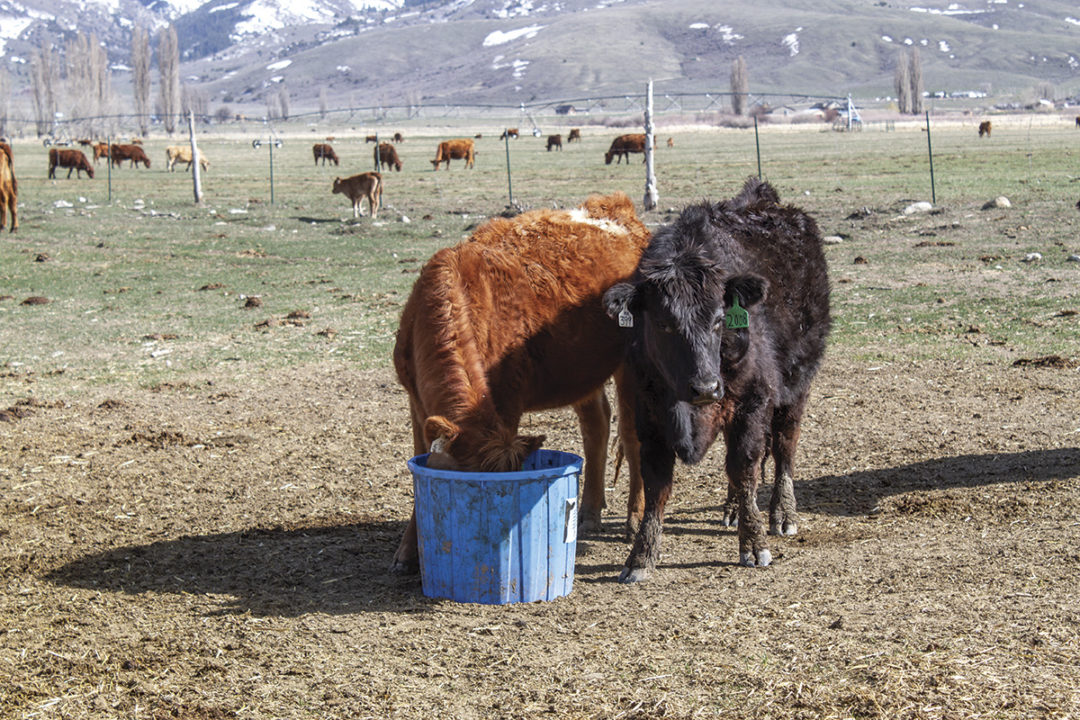Regardless of the class of cattle you are feeding, the first step is to determine the goals of the feeding program. This includes knowing your on-farm labor, forage and ingredient-handling restrictions and opportunities, as well as the size and look of the animal you want to have at the end of the program. The nuances of feeding breeding stock takes on greater dimension compared to feeder cattle because of the long-term considerations required of breeding stock. In a broad sense, the goal with replacement heifers is to give them the nutritional foundation for success that will hopefully allow them to produce eight to 10 big, healthy calves in their productive lifetime.
One of the most common questions posed in heifer development is if a high-input or low-input feeding program is the way to go. The answer, as in so many complex situations, is: “It depends.” The fact is: There isn’t any one right program that fits everyone. Every producer should do what fits their operation and their resources best. This could mean growing heifers in big grass pastures with some supplemental feed or, on the other end of the spectrum, it may include confining heifers in smaller pens and feeding a hay or silage-based TMR. My first (and best) piece of advice when developing heifers is the same advice when feeding any other class of cattle: Don’t let the check you write limit the size of the check you receive. In other words, don’t waste any money on a feeding program by overfeeding or throwing every bell and whistle on the market at them. But we can do a good job of monitoring our input costs while making the most desirable product possible to buyers (or for our own heifer replacements).
The best place to start is always the beginning, and in this case, it may be much earlier than is typically considered in developing heifers. As our understanding deepens in so many areas, such as genomics and nutrition, it is important to know the indirect responses we can influence. When I say the beginning, I mean all the way back to conception. With our knowledge of generational nutrition (the effect nutrition can have on subsequent generations), we know that when cows have their nutritional needs met, they produce offspring that are more productive than offspring born from nutritionally restricted cows. In essence, our heifer development program really starts with how we feed the cow producing the heifers we are developing.
What is the end goal?
Different development programs need to be aligned with the desired end goal: Are the heifers being developed for retention in your own herd or for sale to others? If you are developing your own heifers, you probably won’t want to have them on a super-aggressive plane of nutrition, maybe gaining 1.5 to 2 pounds per head per day. However, if you are developing heifers for sale, in most instances bigger, stouter, more mature-appearing heifers will sell better than the younger, greener ones. The most important thing is that the heifers are healthy and cycling when it’s time to breed them.
Especially when developing heifers for sale, it is important to know what kind of animal you are working with. If you have higher genetic or phenotypic merit-type heifers that have more potential value, it may be worth a bit more inputs to make sure these heifers look the part come sale time. If you are a fan of house-flipping reality TV shows, you see this same concept when you have a property with higher sale potential. When dealing with a valuable property, you include the extra investments to ensure you get all the value you can out of the property.
Take a longer view
When it comes down to nutrient details of a heifer development program, here are a few guidelines: Under no circumstances should the heifers be shorted on protein. Due to the long-term developmental expectations, vitamin and mineral inputs on heifers fit into this category as well. Energy is the place where we can potentially pinch pennies by strategically targeting the needed average daily gain (ADG). Protein is essential because of its role in muscle maintenance and development and proper rumen function. These are critical to the animal’s short-term and long-term functionality; therefore, if we don’t meet these needs, we will see compromised results. Vitamin and mineral nutrition is critical for skeletal and tissue health, as well as immune function, and it is essential for getting a heifer pregnant, maintaining that pregnancy, and proper recuperation and lactation following birth.
Energy level allows us more flexibility because it will largely determine the rate of growth and body condition. In low-input situations, I would recommend a targeted ADG of 1.5 to 2 pounds per head. In higher-input settings it might be worth targeting an ADG up to 2.5 pounds per head. The upper limit on feeding energy is to make sure the heifers are not overly conditioned to the extent where buyers are turned off or their ability to breed is impaired. For heifers being retained in the herd, gaining weight beyond what will allow them to breed up at the desired time can be considered wasted input. With the genetic advancements we have seen in just the past decade, the kind of cattle we are producing now have more muscle and potential for growth than cattle we raised in the past. For this reason, it is imperative to make sure we have our nutrition programs in tune with the animals we are developing today.
In summary, make sure your heifer development programs are designed to meet the output goals you have set, and be conscious that the superior cattle we are producing have more potential than those produced in previous generations. There is an adage in cattle feeding, “It costs the same to feed a bad one as a good one,” meaning you might as well feed a good one. If we can tailor our nutrition programs to the advanced genetics we have access to, we might be able to turn that old adage on its ear. Superior genetics that are provided superior nutrition might be far more efficient than outdated, inferior cattle. A well-designed nutritional investment during development should pay dividends for years to come in heifers that become cows that calve, re-breed and wean big, healthy calves.












